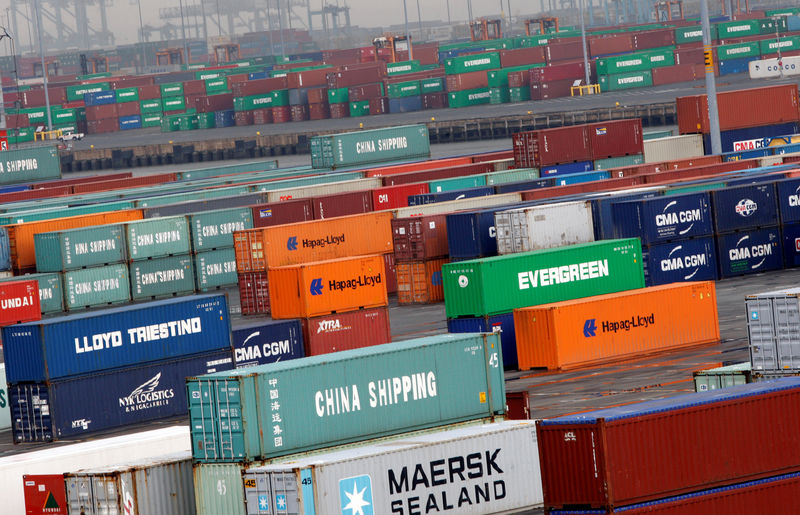WASHINGTON (Reuters) - The U.S. trade deficit dropped to its lowest level in nearly 1-1/2 years in October, suggesting trade could contribute to economic growth in the fourth quarter, though a fall in imports of consumer goods hinted at a slowdown in domestic demand.
The Commerce Department said on Thursday the trade deficit tumbled 7.6% to $47.2 billion, the smallest since May 2018, as both imports and exports of goods declined. It was the second straight monthly fall in the trade bill and the percent decline was the biggest since January.
The decreases in imports and exports suggested the White House's "America First" agenda, marked by a 17-month trade war with China, was reducing trade flows.
Data for September was revised to show the trade gap shrinking to $51.1 billion instead of the previously reported $52.5 billion. Economists polled by Reuters had forecast the trade gap narrowing to $48.7 billion in October.
The goods trade deficit with China fell 1.1% to $31.3 billion, with imports unchanged and exports increasing 3.4%. The goods trade gap with the European Union jumped 20% to $16.4 billion.
While Washington and Beijing are working on a "phase one" trade deal, the United States has ratcheted up tensions with other trade partners including Brazil, Argentina and France.
President Donald Trump has defended the tariffs as necessary to protect domestic manufacturers from what he says is unfair foreign competition. Trump has accused trading partners, including China, the European Union, Brazil and Argentina of devaluing their currencies at the expense of U.S. manufacturers.
The U.S. has a trade surplus with Brazil, which swelled in October to its highest level since March 2014. The trade surplus with South and Central America hit a record high in October.
Trade tensions have undermined business investment, which together with slowing growth overseas have led to a recession in manufacturing. That is casting a shadow on the longest economic expansion in history, now in its 11th year.
When adjusted for inflation, the goods trade deficit decreased $3.9 billion to $79.1 billion in October, also the smallest gap since May 2018. The drop in the so-called real trade deficit is positive for the calculation of gross domestic product.
It suggested trade could add to GDP growth in the fourth quarter after being a drag for two straight quarters. But the drivers of the decline in the trade gap in October point to softening economic fundamentals.
Growth estimates for the fourth quarter are between a 1.3% and 1.9% annualized rate. The economy grew at a 2.1% pace in the third quarter.
In October, goods imports dropped 2.1% to $204.1 billion. Consumer goods imports fell $2.4 billion amid declines in cellphones and other household items, toys, games and sporting goods, as well as pharmaceutical preparations. This implies a slower pace of consumer spending after two straight quarters of brisk growth.
Motor vehicle and part imports dropped $1.8 billion. Parts imports accounted for most of the drop, likely reflecting a 40-day strike at General Motors (N:GM), which undercut motor vehicle production.

Goods exports fell 0.6% to $136.1 billion in October. They were led by a $0.7 billion drop in shipments of consumer goods. Motor vehicle exports and parts exports fell $0.3 billion. But there were increases in oil exports, with the petroleum surplus the highest on record.